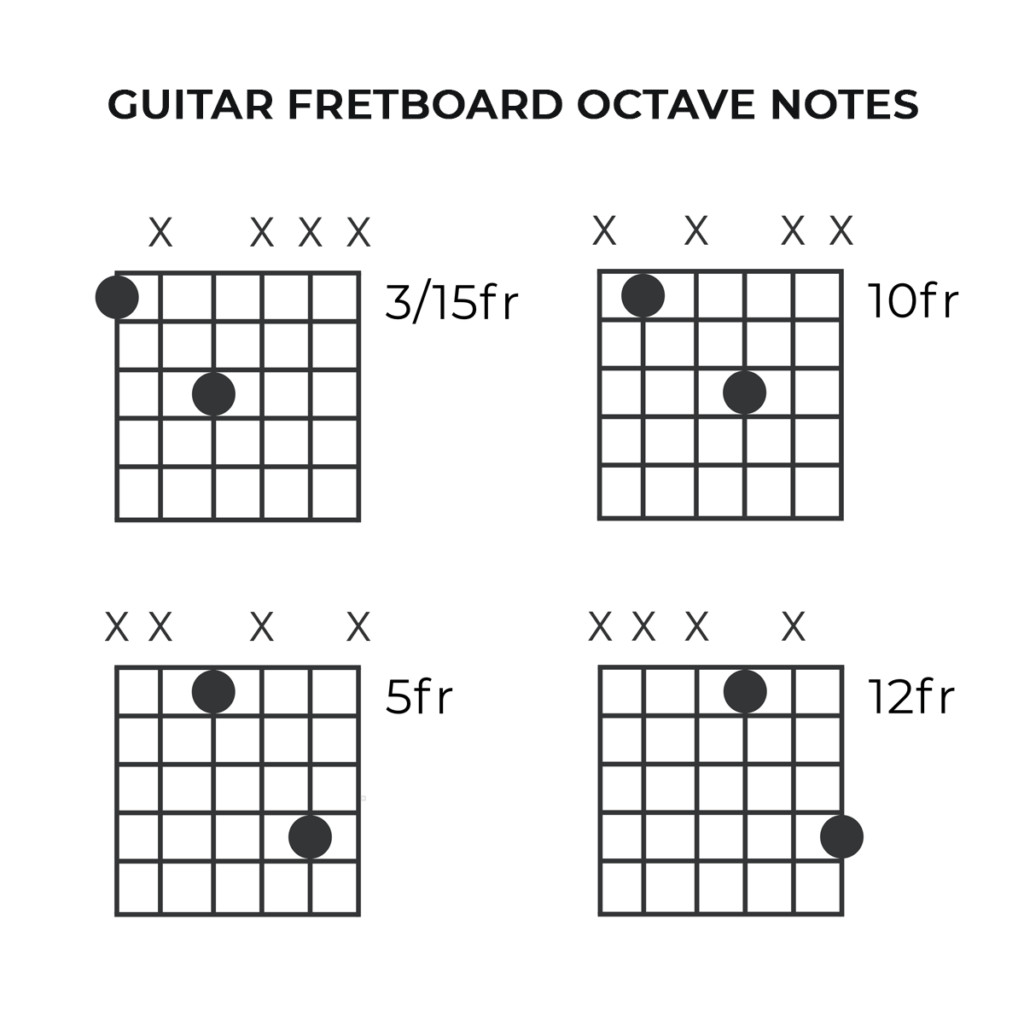Guitar string notes are the foundational pitches produced when each string is played openly, meaning without pressing down on any fret. These open string notes are determined by your guitar’s tuning. While various tunings exist, standard tuning is the most universally used and the perfect starting point for any guitarist.
In standard tuning, the guitar string notes, from the thickest (lowest pitch) to the thinnest (highest pitch), are E, A, D, G, B, and E.
Grasping these open string notes is crucial for learning chords, scales, and ultimately, playing your favorite songs on the guitar.
Open Guitar String Names in Standard Tuning
Most guitars come with six strings. When tuned to standard EADGBE, the notes of each guitar string are:
- 6th String (Lowest E): E
- 5th String (A): A
- 4th String (D): D
- 3rd String (G): G
- 2nd String (B): B
- 1st String (Highest E): E
When holding your guitar, the thickest string, the low E (6th string), is nearest to you. Starting with tuning the low E string is a common practice, as it can then serve as a reference point for tuning the remaining five strings.
To easily remember the guitar string notes, many beginners use mnemonics. A popular one is: “Every Adult Dog Growls, Bites, Eats”. This catchy phrase helps you recall the notes E-A-D-G-B-E from the 6th to the 1st string.
Now you’re familiar with the open guitar string notes: EADGBE, from the lowest to highest pitch.
Navigating the Musical Alphabet on Your Guitar
Understanding open strings is just the beginning. The beauty of the guitar lies in its fretboard, which allows you to play the same notes in multiple positions. To understand this, we need to delve into the musical alphabet.
The musical alphabet consists of seven natural notes: A, B, C, D, E, F, and G. Beyond these, we have sharps (#) and flats (♭), which are semitones (half-steps) between these natural notes. Think of them as the ‘in-between’ notes, expanding the musical palette.
 Diagram of guitar fretboard notes
Diagram of guitar fretboard notes
The repetition of notes across the fretboard stems from octaves. An octave represents the interval between one musical note and another with double its frequency. While notes in different octaves share the same name, their pitch differs – one being higher or lower than the other.
You can find different octaves of the same note even on a single guitar string. Moving 12 frets up or down a string will bring you to the same note, but an octave higher or lower. For example, the open G-string plays a G note. If you fret the same G-string at the 12th fret, you’ll play a G note one octave higher.
Here’s an illustration of octaves on the guitar fretboard:
 Guitar octave notes visualization
Guitar octave notes visualization
Understanding octaves and the musical alphabet unlocks the guitar fretboard. Knowing you can play the same note in different places grants you incredible flexibility for melodies, chords, and scales. It’s about connecting the dots and exploring the sonic landscape available at your fingertips.
Locating Guitar Notes on the Fretboard
Finding specific notes on the fretboard might seem daunting initially, but with practice, it becomes second nature. Here’s a step-by-step approach to navigate the fretboard effectively:
-
Master Open Strings: Begin by playing each open string and consciously listening to its note (E, A, D, G, B, E). This exercise helps you memorize the string names and their corresponding sounds. Always ensure your guitar is correctly tuned beforehand.
-
Utilize Fretboard Markers: Notice the small dot inlays on the fretboard, typically on the 3rd, 5th, 7th, 9th, and 12th frets. These markers are visual aids to help you quickly locate frets and navigate between notes and chords.
-
Explore Note Repetition: Start finding the same note on different strings. For instance, the E note of the open high E-string (1st string) can also be found at the 5th fret of the B-string (2nd string) and the 9th fret of the G-string (3rd string).
-
Leverage the 12th Fret as a Reference: The 12th fret is a crucial marker. It represents an octave – the point where notes repeat. For example, the open low E-string (6th string) and the 12th fret of the same string both produce an E note, but the 12th fret E is an octave higher.
Learning Basic Open Chords
Understanding guitar string notes is the cornerstone for building chords and playing scales. A guitar chord is essentially a combination of multiple notes played simultaneously across different strings.
To play a chord, you’ll typically use a chord diagram. This diagram visually represents which strings to fret and which to play open. Some chords also require you to avoid playing certain strings altogether. Chord diagrams guide your finger placement, ensuring your hand is positioned correctly to play the chord cleanly.
Beginner-friendly chords to learn first include major chords like G, C, and D. These open chords are fundamental and widely used in countless songs.
Mastering the Fretboard with Scales
Once you’re comfortable with chords, exploring guitar scales is the next exciting step. A guitar scale is a sequence of notes played in a specific order, defined by intervals. Scales, like chords, are named after their root note – the starting note of the scale. Understanding scales unlocks a deeper understanding of the fretboard and empowers you to improvise melodies and create guitar solos.
 Musician improvising guitar solo
Musician improvising guitar solo
The sound of a scale is determined by the intervals (distances) between its notes. For example, a major scale pattern consists of seven notes arranged in a specific pattern of whole and half steps. Common and essential scales for guitarists include major scales, minor scales, and pentatonic scales.
The C major scale, for instance, comprises the notes: C, D, E, F, G, A, and B. By learning to locate these notes across the fretboard, you can play the C major scale in various patterns and octaves, expanding your musical vocabulary.
The Importance of Guitar Tuning
Knowing your guitar string notes makes tuning significantly easier. Correct tuning is paramount for pleasant-sounding guitar playing. Playing an out-of-tune guitar will quickly highlight the importance of accurate tuning!
 Woman using tuner app to tune guitar
Woman using tuner app to tune guitar
While experienced players can tune by ear using a reference pitch (like a piano note for the low E string), using a tuner is the most reliable method, especially for beginners. Traditional tuner devices work well but can be less convenient than modern alternatives.
Tuner apps offer a fantastic solution. Using your device’s microphone, these apps detect the pitch of your guitar strings and indicate whether they are flat (too low) or sharp (too high). You then adjust the tuning pegs to tighten or loosen the strings until the app confirms the correct pitch for each string.
For a user-friendly and effective tuning experience, consider downloading the GuitarTuna tuning app, available for both iOS and Android. GuitarTuna is free and provides visual feedback and reference sounds to help you achieve perfect tuning every time. It even includes options for exploring alternate tunings beyond standard tuning.
Elevate Your Guitar Skills with Yousician
With a solid grasp of guitar string notes, standard tuning, basic music theory, and fundamental chords, you’re well-equipped to embark on your guitar journey. These are essential skills for every aspiring guitarist. Yousician offers a powerful and engaging platform to deepen your knowledge and accelerate your learning through interactive music education technology.
Learning guitar has never been more enjoyable. Yousician provides interactive tutorials and allows you to play along with your favorite songs. The app listens to you play using your device’s microphone and gives real-time feedback on your timing and accuracy. Download Yousician for your computer or iOS/Android devices and start your musical adventure.
Begin exploring the world of guitar notes and beyond with Yousician Premium. Start your free 7-day trial today and unlock your musical potential!
Ready to play?
Play the songs you love and learn guitar with Yousician. Try Premium+ free for 7 days. Sign up and begin your musical journey now.
Start Your Free Trial

